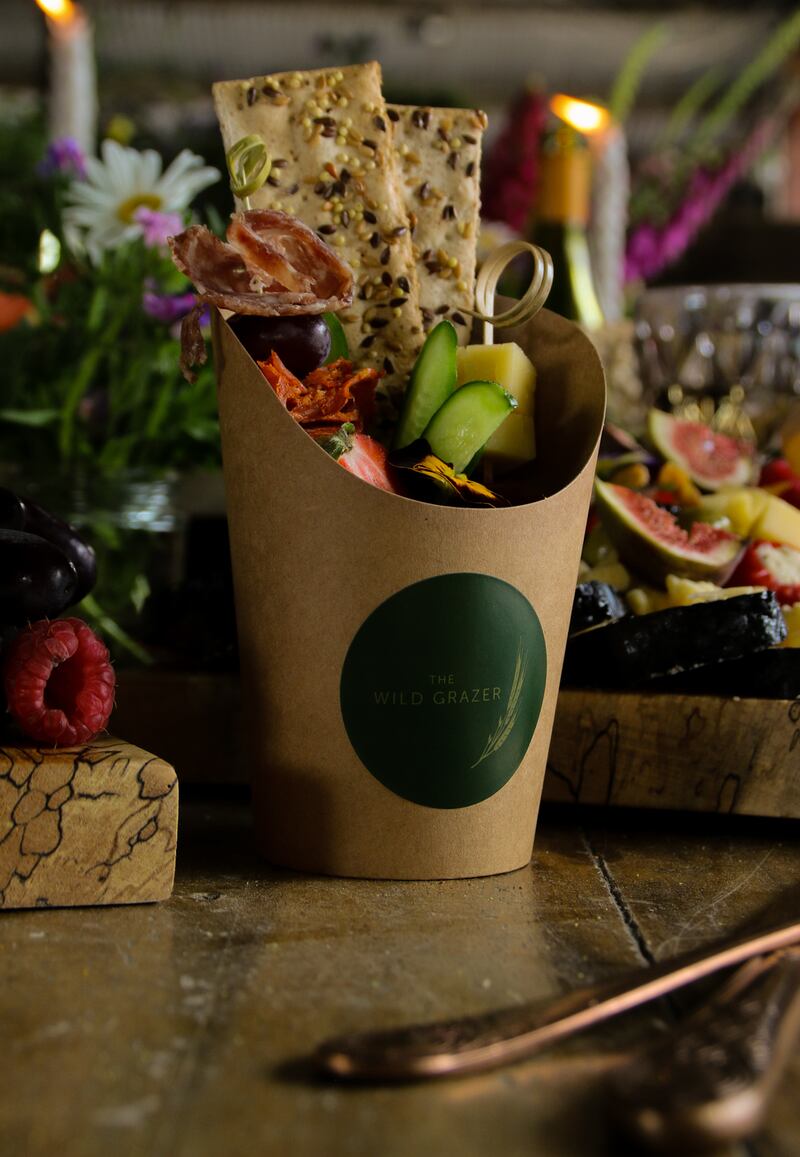Many of us retreat to our kitchens after a day at work, but for some the kitchen is their place of work. So, what’s it like to run a food business from your home?
Ciara Fennessy owns one of the hardest-working kitchens in Delgany. By day, it caters for her family of four; by night it transforms into Ciara’s Kitchen cookery school.
“A couple nights a week, a group of eight to 14 people sit around my island,” she explains. “I cook about eight dishes and they taste them as they are ready and then they leave with the recipes and hopefully make them for themselves.”
The classes cost €50 per head, or €20 for an online class. She also hosts corporate events and develops recipes for food brands.
Cooking eight dishes is challenging, so preparation is key. “Each class takes about 10 hours to get ready for,” she says. “Most of the prepping is done during the day so I don’t waste valuable time chopping ingredients on the night.”
With its 4m-long island, the large kitchen is perfect for groups. Getting registered as a food business meant she had to have separate fridges, sinks, and storage for dry goods and cookery school utensils and crockery. Apart from that, it looks like a typical family kitchen, albeit a clinically clean one. But how difficult is it to run a business in the home?

“The kids have never known anything else,” she says. Her twins were about six months when she started giving cookery demonstrations, “and with word of mouth it just took off”. The Ballymaloe-trained cook had worked in marketing for several years, but working with food was always her dream.
“It’s the best thing I ever did,” she says. “When the kids came along it was a perfect opportunity to start from home and be a stay-at-home mum while earning a bit of money. While they grew, the business grew. I’m still around for homework and pick-ups and lunches and yet I’m running a successful business and doing something I love.”
And because the children, now 12, have grown up with the cookery school, she says it’s not that difficult to keep the kitchen in the immaculate state expected of a cookery school.
“There are no school bags or toys lying around. But the kids have never known any different, so they’ve never had to get used to me running a business downstairs. They just know anything they bring down goes back upstairs. It’s quite a sound-proofed house too, so if we have a noisy gang in, they sleep through it all.”
The only downside of working from her kitchen has been missing the banter and friendships of the office. “But then I have all these people coming into my house in the evening,” she says. “After working alone all day, I find I can’t stop talking. I just really, really enjoy what I do.”
Cheese please

Sarah McGree’s wedding cakes are a thing of wonder. From a distance, the many-tiered creations look like wedding cakes, but they are actually an artfully assembled selection of cheeses.
It’s something she never imagined doing when she was working as an event catering specialist and food stylist in the US and Canada, working for high-profile people such as Hillary Clinton and Warren Buffett. Covid-19 brought her back to her childhood home in Kilkenny and to her new business.

Observing the trend towards food delivery, she set up The Wild Grazer to deliver graze boxes of cheese, charcuterie and other treats. A client asked her to make a wedding cheesecake and when her elegant tower of cheeses got such a good response, she decided to offer the service.
She set up her kitchen and office in a portable cabin at her new home in Freshford last year. “My biggest priority in planning the kitchen was for a lot of counter space, to allow me to prepare grazing boards and single-serve graze cups,” she says. But she also wanted a nice place to work. “It’s a calm space, very soothing, neutral, rustic and it’s a very nice space to work in. I have my yoga mat out here and I do a bit of yoga before I start work. It’s my Zen space.”

It’s also where she plans her workshops on creating edible art, where cheese unsurprisingly plays a starring role. But it is the wedding cake business that has really defined her and led to her winning the cake designer of the year in the 2023 Weddings Online awards.
She is passionate about using all Irish cheeses and offers clients a menu of cheeses that combine to form the perfect cone shape. “The bases I use are usually a mix of old Irish creamery cheddars or else Coolea cheese, which has a beautiful vibrant yellow wax rind which is stunning. For the next tier up, I often go for a Gubbeen, smoked or unsmoked, and the next tier is a blue cheese from Cashel. It is one of those cheeses that is so mild and creamy that it’s always a hit.” There is plenty of choice for the smaller top tiers because those sizes are the ones you can buy in the supermarket.

She estimates that about 40 per cent of her clients also have a traditional wedding cake, to cater for guests who are not as enthusiastic about cheeses as they are, or for use on the day after.
When she left the hustle and bustle of Toronto, she never expected to be running a thriving business from her kitchen in the Kilkenny countryside three years later. “It was a tough few years, but I’m now in a place where I’d hoped and wished I’d be in,” she says. “I have a lot of gratitude for where I am and how far I’ve come.”
Food ideas
Cúán Greene has worked in some of the world’s leading restaurants, including Noma in Copenhagen, but it is the kitchen in his rented Dublin home that is currently inspiring him. It is on the first floor of the city centre townhouse and has an expansive window overlooking the street.

“There are a lot of soft tones, calming features and natural materials like wood and beautiful ambient lighting,” the chef and author says. “It’s sleek but also very comforting. It’s a really lovely space.”
This is where he produces Ómós, the newsletter he describes as a travelling caravan of ideas about food, culture and community, which you can access on Substack. More than 3,000 weekly readers come for his recipes, interviews with producers, and musings on the industry.
“I write all my articles from this kitchen table and this space is perfect for testing all my recipes. Having a big window, nice lighting and lovely tones are all conducive to good work.”
He is fascinated by the impact of good design in kitchens. “This summer I was invited to do public dinners in restaurants in New York, Berlin, Bangkok and Iceland and each time I learned a lot about kitchen environments,” he says.
“People often forget the importance of flow in a kitchen, how many steps you have to take between your hob, fridge and sink. How far away do I need to walk to wash my hands and how much time am I losing? And how far away is the pot wash? These things are absolutely crucial in a professional kitchen because time is money but they’re no less important in a home kitchen.”
As a private chef, he has catered for events in homes with kitchens that look impressive but don’t work when it comes to the flow. “Or maybe the island unit is too wide and becomes that catch-all space for letters and whatever.”
On some occasions, the poor layout of the kitchen and dining area means employing another member of staff when catering an event. “If the dining room is next to the kitchen, I might not need a waiter, but if it’s upstairs I’ll have to employ one,” he says.
Of all the kitchens he has worked in around the world, he was most struck by the focus on lighting when he worked in Copenhagen. “The lighting, both artificial and natural, was of equal quality to the lighting for the guests and that was markedly different to anything I had ever seen,” he recalls.
“I had come from top kitchens where you wouldn’t see natural light. The light that illuminated the kitchen was this horrible, toxic and invasive lighting. To expect someone to work for 14 hours in the back of a tiny space is cruel, almost,” he says.
The design of professional kitchens is improving all the time, “but we still have a lot of work to do because design makes such a difference to people’s behaviour and how we interact with people”, he says.











